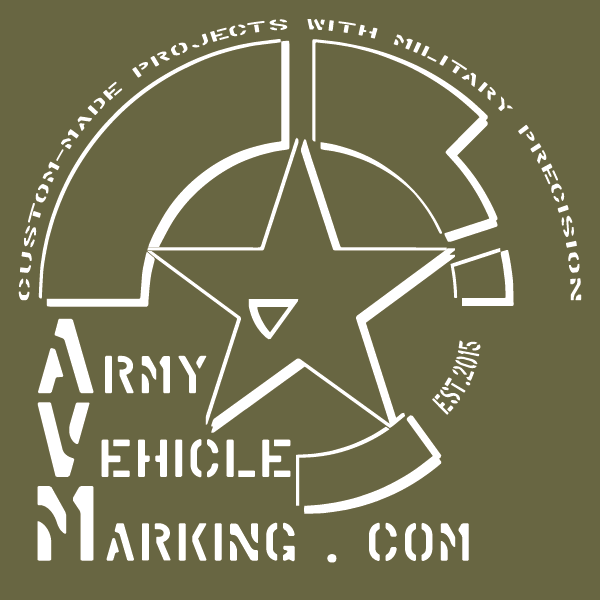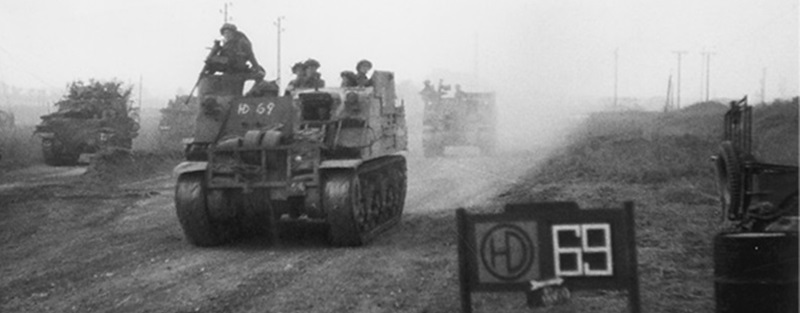Operatie Colin – oktober 1944
Inleiding
Oktober 1944 was een keerpunt in de geschiedenis van Brabant, aangezien de 51st Highland Division, een moedige eenheid van de geallieerden, opnieuw in actie kwam om de regio te bevrijden. Deze uitgebreide analyse volgt de dagelijkse gebeurtenissen tijdens Operatie Colin, waarbij elk dorp en elke stad die betrokken was bij deze historische bevrijdingscampagne, gedetailleerd wordt besproken.

Dag 1: 21 oktober 1944
De operatie startte met gedetailleerde plannen voor de 51st Highland Division, waaronder de bevrijding van Schijndel, Schutsboom, Halder, Weibosch, St. Michels Gestel en Vught. Terwijl de 7th Argylls de bossen ten zuiden van de Zuid Wilhelmsvaart zuiverden, drong de 7th Black Watch door naar St. Michels Gestel en Vught.
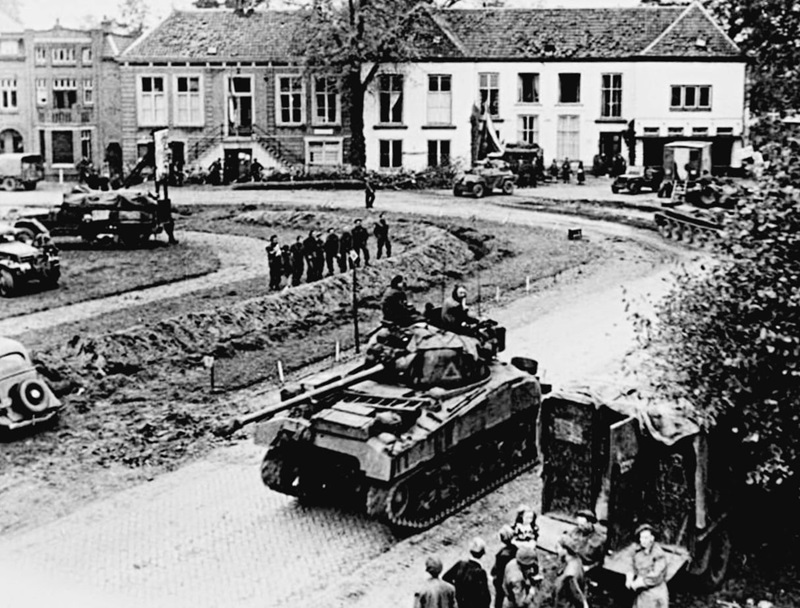
Dag 2: 22 oktober 1944
De 2nd Derby Yeomanry en de 5/7th Gordons speelden een cruciale rol bij het zuiveren van Halder en Weibosch. Gedetailleerde plannen werden gesmeed voor de oversteek van het Aftwateringskanaal, met strategische punten in Schijndel, Schutsboom en Weibosch.

Dag 3: 23 oktober 1944
De 7th Argylls en de 7th Black Watch lanceerden hun aanvallen, gericht op St. Michels Gestel en Vught. De bevrijding van Halder door de 1st Black Watch was een cruciaal onderdeel, terwijl de 2nd Derby Yeomanry de rechterflank vasthield.

Dag 4: 24 oktober 1944
Intense gevechten vonden plaats bij St. Michels Gestel, waarbij de Northamptonshire Yeomanry een sleutelrol speelde in het veiligstellen van de noordflank. De strijd om Vught begon, met de 7th Black Watch tegen hevige tegenstand en mortiervuur. Het bouwen van bruggen over de Dommel en het Halsche Water was essentieel.
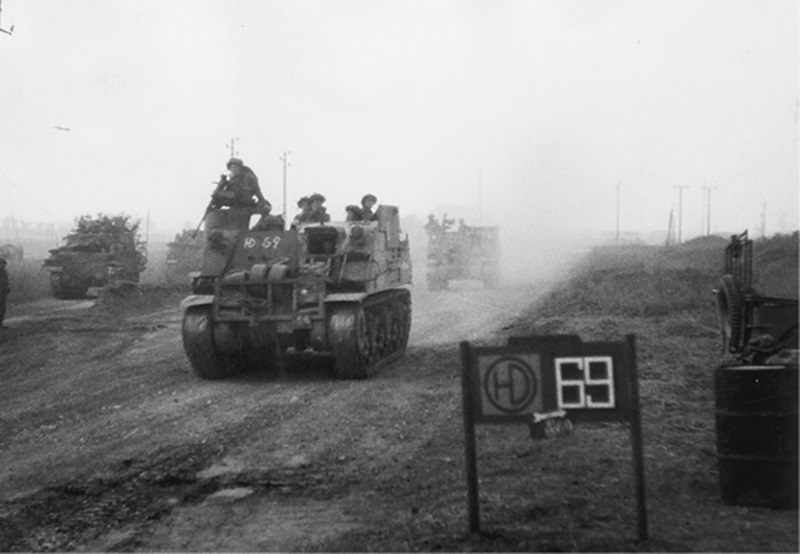
Dag 5: 25 oktober 1944
De 7th Argylls, gesteund door de 2nd Derby Yeomanry, staken de Dommel over en rukten op naar Vught. Intense gevechten met Duitse troepen die een tegenoffensief lanceerden, maakten deze dag uitputtend voor de Argylls.

Dag 6: 26 oktober 1944
De 7th Black Watch passeerde de 7th Argylls en bezette Vught zonder veel tegenstand. Ontdekking van een concentratiekamp getuigde van de gruwelen van de bezetting. Ondanks de bevrijding van Vught werd deze nog steeds bestookt met zwaar vijandig vuur van “Fort Isabella”.
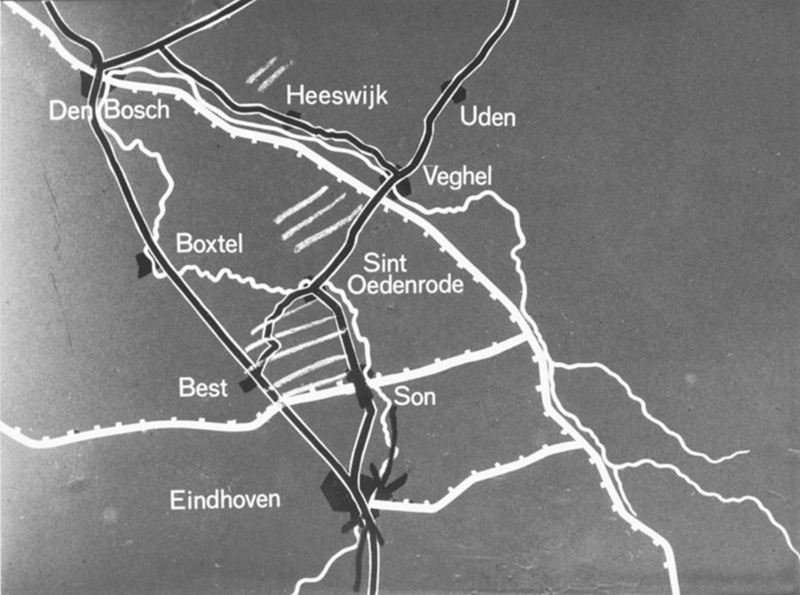
Dag 7: 27 oktober 1944
De bevrijde gebieden werden geconsolideerd, maar sporadische gevechten en Duitse patrouilles bleven een uitdaging vormen. De 51st Highland Division hoopte op een welverdiende rustperiode, maar onverwachte wendingen van de oorlog bleven dreigen.
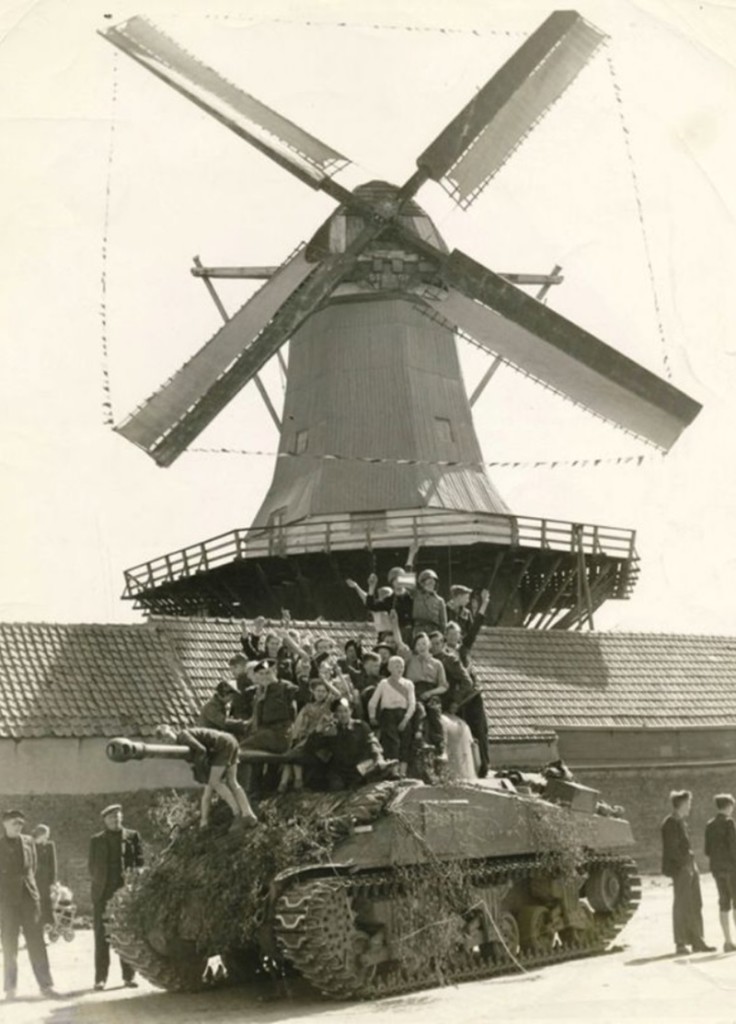
28 oktober 1944: Verplaatsing naar Helvoirt
Op 28 oktober verplaatste de 51st Highland Division, inclusief de 7th Black Watch en 7th Argylls, zich naar een concentratiegebied ten westen van Helvoirt om ruimte te maken voor een brigade van de 53rd Division. Deze verplaatsing bereidde voor op een aanval over het Aftwateringskanaal.
29 oktober 1944: Van “Operatie Colin” naar de “Battle of Maas”
De volgende fase, bekend als de Battle of Maas, begon op 29 oktober. De 51st Highland Division werkte samen met andere geallieerde eenheden om het gebied ten oosten van het Zuid Willemsvaart en ‘s-Hertogenbosch op te ruimen.

Tactische Nummers en Kleuren
Tijdens deze operaties werden tactische nummers en kleuren gebruikt om onderscheid te maken tussen verschillende eenheden. De eenheden van de 51st Highland Division waren respectievelijk herkenbaar aan onderstaande kleuren en markeringen op de voertuigen.
ETO Sept 1944 - Holland - 51st Highland Division (HD)
Unit No. Colour Description
HQ 51 (H) Div 40 Black Headquarters
51st Highland Division (HD)
HQ R.A 40 Red-Blue Headquarters
Royal Artillery (R.A.)
120 Fd Regt 42 Red-Blue 126 Field Regiment Royal Artillery
127 Fd Regt 43 Red-Blue 127 Field Regiment Royal Artillery
128 Fd Regt 44 Red-Blue 128 Field Regiment Royal Artillery
61 A/Tk Regt 46 Red-Blue 61 Anti-tank Regiment Royal Artillery
49 L.A.A Regt 47 Red-Blue 49 Light Anti-aircraft Regiment Royal Artillery
H.Q.R.E 40 Blue Headquarters
Royal Engineers (R.E.)
239 Fd.Pk.Coy 48 Blue Field Park Company Royal Engineers
274 Fd.Coy 49 Blue 274 Field Company Royal Engineers
275 Fd.Coy 50 Blue 275 Field Company Royal Engineers
276 Fd.Coy 51 Blue 276 Field Company Royal Engineers
DIV SIGs 40 White-Blue Divisional Signals
H.Q. 152 Bde 81 Scarlet Headquarters
152 Brigade
2 Seaforth 56 Scarlet 2nd Battalion Seaforth Highlanders
5 Seaforth 57 Scarlet 5th Battalion Seaforth Highlanders
5 Camerons 58 Scarlet 5th Battalion Cameron Highlanders
H.Q. 153 Bde 87 Green Headquarters
153 Brigade
5 Black Watch 60 Green 5th Battalion The Black Watch
1 Gordons 61 Green 1st Battalion Gordon Highlanders
5.7 Gordons 62 Green 5th/7th Battalion Gordon Highlanders
H.Q. 154 Bde 94 Brown Headquarters
154 Brigade
1 Black Watch 67 Brown 1st Battalion The Black Watch
7 Black Watch 69 Brown 7th Battalion The Black Watch
7 Argyll & S.H 68 Brown 7th Battalion Argyll and Sutherland Highlanders
1/7 Middlesex 64 BlaCK 1st/7th Battalion Middlesex Regiment
H.Q. RASC 40 Red-Green Headquarters
Royal Army service Corps (R.A.S.C.)
525 RASC Coy (152) 70 Red-Green 525 Company RASC with 152 Brigade
526 RASC Coy (153) 71 Red-Green 526 Company RASC with 152 Brigade
527 RASC Coy (154) 72 Red-Green 527 Company RASC with 152 Brigade
458 Div. Tps Coy RASC 73 Red-Green Divisional Transport Company
H.Q. RAMC 40 Black Headquarters
Royal Army Medical Corps (R.A.M.C.)
174 Fd.Amb 75 Black 174 Field Ambulance
175 Fd.Amb 76 Black 175 Field Ambulance
176 Fd.Amb 77 Black 176 Field Ambulance
29 Fd. Hyg. Sec 78 Black 29 Field Hygiene Section
A.D.O.S. HQ & DUM 40 Black Army Depot Ordnance Supplies
(A.D.O.S.)
H.Q. REME 40 Blue-Yellow–Red Headquarters
Royal Electrical and Mechanical Engineers (R.E.M.E.)
152 Bde W’Shops 88 Blue-Yellow–Red 152 Brigade Workshops
153 Bde W’Shops 89 Blue-Yellow–Red 153 Brigade Workshops
154 Bde W’Shops 90 Blue-Yellow–Red 154 Brigade Workshops
Provost Company 79 Black Military Police (M.P. / PROVOST)
Postal Unit 80 Black Postal Unit
13 Fd. Sec. Sec 40 Black 13 Field Security Section
2. D.Y. 41 Green-Blue 2nd Derbyshire Yeomanry
ETO Sept 1944 - Holland - 51st Highland Division (HD) - Attached Units
Description AFFILIATIONS 152 BDE 153 BDE 154 BDE DIV RES TPS* Remakrs
Squadrons of the
2nd Derbyshire YeomanrySqns 2 D.Y. A B C (* Divisional
Reserve
Troops)Support for 51st Highland Division: The 2nd Derbyshire Yeomanry played a crucial role in supporting the 51st Highland Division during Operation Colin.
Accompanying the 51st Highland Division: The armored cars of the 2nd Derbyshire Yeomanry accompanied the infantry of the 51st Highland Division during the operation.
Advance and Support: As part of Operation Colin, the 2nd Derbyshire Yeomanry advanced alongside the Highlanders, providing reconnaissance, armored support, and engaging the enemy as needed.
Role in the Capture of Schijndel: The Derbyshire Yeomanry likely played a role in the capture of Schijndel, contributing to the success of the operation.
Collaboration with Infantry: The armored capabilities of the 2nd Derbyshire Yeomanry would have been instrumental in dealing with any opposition encountered during the advance.
Coordinated Effort: The operation would have involved a coordinated effort between the infantry of the 51st Highland Division and the armored support provided by the 2nd Derbyshire Yeomanry.
Field Regiments of the
Royal ArtilleryFd.Regts RA 128 127 126 126:
Offensive West of 's-Hertogenbosch (Night of 23 October): The division's next offensive action occurred west of 's-Hertogenbosch on the night of 23 October. With massive artillery support, the infantry successfully took all their objectives.
Advances through Loon op Zand and Afwaterings Canal (Late October - Early November): Following the initial success, there were follow-up advances over succeeding days through Loon op Zand and across the Afwaterings Canal towards the Meuse (Dutch: Maas) by early November.
Assault Crossing of Willems Canal (14 November): On 14 November, the division carried out an assault crossing of the Willems Canal near Weert, accompanied by another heavy artillery barrage.
Advance to Zig Canal and Crossing (17 November): After the assault crossing of the Willems Canal, the division moved on to the Zig Canal and crossed it on 17 November with much less preparation.
Move to 'The Island' (Mid-November): Subsequently, the 51st (H) Division was moved to hold 'The Island,' the wet low-lying country between Nijmegen and Arnhem, which had been captured during Operation Market Garden.
127:
Offensive West of 's-Hertogenbosch (Night of 23 October): On the night of 23 October, the division launched an offensive west of 's-Hertogenbosch, utilizing 300 guns for massive artillery support. The infantry successfully achieved all their objectives.
Advances through Loon op Zand and Afwaterings Canal (Late October - Early November): Following the success, there were follow-up advances over succeeding days through Loon op Zand and across the Afwaterings Canal towards the Meuse (Dutch: Maas) by early November.
Assault Crossing of Willems Canal (14 November): On 14 November, the division carried out an assault crossing of the Willems Canal near Weert, accompanied by another heavy artillery barrage.
Advance to Zig Canal and Crossing (17 November): After the assault crossing of the Willems Canal, the division moved on to the Zig Canal and crossed it on 17 November with much less preparation.
Move to 'The Island' and Rest Period (Mid-November - Mid-December): The 51st (H) Division was then moved to hold 'The Island,' the wet low-lying country between Nijmegen and Arnhem, captured during Operation Market Garden. In mid-December, the division was pulled out of the line for a rest period.
128:
Offensive West of 's-Hertogenbosch (Night of 23 October): The 51st (H) Division launched an offensive west of 's-Hertogenbosch on the night of 23 October. The infantry, supported by massive artillery, successfully achieved all their objectives.
Advances through Loon op Zand and Afwaterings Canal (Late October - Early November): Following the successful offensive, there were follow-up advances over succeeding days through Loon op Zand and across the Afwaterings Canal towards the Meuse (Dutch: Maas) by early November.
Assault Crossing of Willems Canal (14 November): On 14 November, the division carried out an assault crossing of the Willems Canal near Weert. This operation was accompanied by another heavy artillery barrage.
Advance to Zig Canal and Crossing (17 November): Subsequently, the division moved on to the Zig Canal and crossed it on 17 November with much less preparation.
Occupation of 'The Island' and Rest Period (Mid-November - Mid-December): The division was then moved to hold 'The Island,' the wet low-lying country between Nijmegen and Arnhem, captured during Operation Market Garden. In mid-December, the division was pulled out of the line for a rest period.
Field Companies of the
Royal EngineersFd Coys RE 275 276 274 Unit History (274 Field Company Royal Engineers):
274 Field Company Royal Engineers was a 2nd Line Territorial Army Engineer Company.
It served initially with the 9th (Highland) Infantry Division in the United Kingdom until August 6, 1940.
Afterward, it converted to the 51st (Highland) Infantry Division.
Service Periods:
The unit had various deployments, including:
United Kingdom (pre-1940 and November 26, 1943, to June 2, 1944)
At Sea (August 12, 1942, to August 11, 1942, and July 8, 1943, to July 10, 1943)
Middle East (July 8, 1943, to November 7, 1943)
Mediterranean (November 7, 1943, to November 26, 1943)
North West Europe (June 7, 1944, to August 31, 1945), including Normandy, Belgium, The Netherlands, and Germany.
Furthermore:
Field Company, Royal Engineers:
Summary of Field Company, Royal Engineers (1944-1945) Personnel and Structure:
Unit Overview:
- The Field Company was the standard unit of the Royal Engineers within infantry divisions during WWII.
- Each infantry division had three Royal Engineers field companies.
- Functions included bridging, demolitions, obstacle clearance, defense construction, water supply, and bomb disposal.
Command Structure:
- Major commanded each field company, with a Captain as the second-in-command.
- Small company headquarters included the company serjeant major and company quarter-master-serjeant.
- Each company comprised three platoons, each with a headquarters and four sections.
Personnel:
- Total Personnel: 247
- Officers: Major, Captain, 5 Subalterns.
- Serjeants: Company Serjeant Major, Transport Serjeant, 4 Serjeants.
- Lance Serjeants, Corporals, and Lance Corporals (sapper and driver classes).
- Sappers: 145
- Drivers: 47
Attached Personnel:
- 9 individuals, including Officers' Mess Cook, A.C.C., Corporal Cook, A.C.C., and 7 Cooks, A.C.C.
Personnel by Trades:
- 194 individuals with various trades such as blacksmiths, bricklayers, carpenters, clerks, concretors, draughtsmen, drivers, electricians, fitters, masons, miners, painters, decorators, etc.
Non-Tradesmen:
- 39 individuals, including batmen, batmen drivers, drivers of vehicles, sanitary dutyman, transport non-commissioned officers, water dutyman.
Vehicles:
- 16 Motorcycles, 3 Jeeps, 2 Light Recce Cars, 7 Trucks (15cwt General Service), and others.
Company Headquarters Personnel:
- 46 individuals including Major, Captain, 2 Subalterns, Company Serjeant Major, Transport Serjeant, Serjeant, and others.
Platoons or Troops Personnel:
- 67 individuals at Platoon Headquarters including Subaltern, Serjeant, Lance Serjeants, Corporals, Lance Corporals, Sappers, and Drivers.
Equipment:
- Each company carried explosives, cutting charges, mine detectors, Bren gun, Sten gun, Lee-Enfield rifles, PIAT anti-tank weapons, and 20mm anti-aircraft guns.
- Specific quantities of explosives, primers, and other equipment were allocated.
Organization:
- All transport was at platoon headquarters, carrying various vehicles and personnel.
- Each platoon issued with PIAT anti-tank weapons, explosives, cutting charges, mine detectors, and other equipment.
This detailed information provides a thorough understanding of the personnel, command structure, trades, non-tradesmen, vehicles, and equipment of the Field Company, Royal Engineers during the specified period in 1944-1945.
Companies of the
1st/7th Battalion,
The Manchester RegimentCoys 1/7 Mx D C B A Move to Turnhout and Advance into the Netherlands (September): The 1st Manchesters, along with the rest of the 53rd (Welsh) Division, moved to Turnhout. Later in the month, they advanced into the Netherlands.
Heavy Action in the Netherlands (September): The 1st and 7th Manchesters saw heavy action in the Netherlands during their advance.
7th Manchesters in the Battle of the Scheldt (Late September): The 7th Manchesters, now part of the 52nd (Lowland) Infantry Division, participated in the Battle of the Scheldt under the command of the First Canadian Army.
Batteries of the
61st Anti-Tank Regiment,
Royal ArtilleryBtys 61 A/Tk. Regt 243 242 241 193 Regimental Composition:
The regiment served under the 9th (Scottish) Infantry Division in the United Kingdom until August 6, 1940.
On August 7, 1940, it transferred to the 51st (Highland) Infantry Division and remained with it for the rest of the war.
Batteries mentioned include 241, 242, 243, and 193.
Troop Allocations:
Each battery had three troops, typically labeled as A, B, C, D, E, F, G, H, I, J, K, and L.
The January 1945 war diary indicates troop allocations for each battery.
Equipment Distribution:
In January 1945, the regiment had 16 x Self-Propelled (SP) 17 Pounders, 16 x towed 17 Pounders, and 16 x 6 Pounders.
Each battery had a troop of SP guns.
SP Gun Troop Conversions:
Specific troops within batteries were converted to Self-Propelled guns at different times.
For example, C Troop of 241 Battery was converted on December 15, 1944, and E Troop of 242 Battery on December 19, 1944.
D & H Troops of 193 Battery were converted on March 10, 1945.
Locations:
The regiment was in locations such as Egypt, Normandy (around June 7/8, 1944), and Germany.
The 61st Anti-Tank Regiment participated in the Ardennes Campaign in 1945, with mention of Menil-Favay near Hotton in the Belgian Ardennes.
Field Ambulance Fd.Amb 174 175 176 Field Ambulance Units in 51st (Highland) Infantry Division:
174 Field Ambulance:
- Designation: 174 Field Ambulance
- Role: Medical unit providing frontline medical support and evacuation.
- Assigned to: 51st (Highland) Infantry Division
175 Field Ambulance:
- Designation: 175 Field Ambulance
- Role: Medical unit providing frontline medical support and evacuation.
- Assigned to: 51st (Highland) Infantry Division
176 Field Ambulance:
- Designation: 176 Field Ambulance
- Role: Medical unit providing frontline medical support and evacuation.
- Assigned to: 51st (Highland) Infantry Division
Field Dressing Stations:
47 Field Dressing Station:
- Designation: 47 Field Dressing Station
- Role: Medical facility for the initial treatment of wounded soldiers.
- Assigned to: 51st (Highland) Infantry Division
48 Field Dressing Station:
- Designation: 48 Field Dressing Station
- Role: Medical facility for the initial treatment of wounded soldiers.
- Assigned to: 51st (Highland) Infantry Division
Field Hygiene Section:
29 Field Hygiene Section:
- Designation: 29 Field Hygiene Section
- Role: Responsible for maintaining hygiene and sanitation in the field.
- Assigned to: 51st (Highland) Infantry Division
Note:
- Field Ambulances played a crucial role in providing medical care to wounded soldiers on the frontline.
- Field Dressing Stations provided immediate medical attention before soldiers were evacuated to further medical facilities.
- Field Hygiene Sections were responsible for ensuring proper hygiene and sanitation practices in the field to prevent diseases.
This medical infrastructure was essential for the well-being of the troops in the 51st (Highland) Infantry Division during their operations.
Companies of the
Royal Army Service CorpsRASC Coys 525 526 527 458 The Royal Army Service Corps (RASC) played a crucial role in supporting the 51st Highland Division during the early stages of World War II. Here's an overview of the RASC units within the division in 1940:
Overall Command:
- The RASC element of the 51st Highland Division in 1940 was under the command of Lieutenant Colonel T. Harris-Hunter TD.
Divisional RASC Units:
- The Divisional RASC included three main units:
1. Divisional Ammunition Company
2. Divisional Petrol Company
3. Divisional Supply Column
Brigade RASC Companies:
- Each brigade within the 51st Highland Division had its own RASC company to provide support. The breakdown was as follows:
1. 525 Company RASC was associated with 152 Brigade.
2. 526 Company RASC was associated with 153 Brigade.
3. 527 Company RASC was associated with 154 Brigade.
Additional Unit in 1940:
- In 1940, there was also a unit called 458 Div. Tps Coy RASC. This unit likely provided additional divisional transport and support services.
These RASC units were responsible for handling crucial logistical aspects such as ammunition supply, petrol supply, and general supplies for the 51st Highland Division. During the challenging period of the retreat to St. Valéry, the RASC played a vital role in sustaining the division's operational capabilities. The specific responsibilities of each unit would include transportation, distribution, and management of essential resources needed by the division's combat units.
Batteries of the
40th Light Anti-Aircraft Regiment,
Royal ArtilleryBtys 40 LAA Regt 140 105 268 Move to Antwerp (End of September): The division made a long move to the Antwerp area at the end of September.
Three Weeks in Sint-Oedenrode (September-October): Following the move, the division spent three weeks in the line at Sint-Oedenrode.
Operations towards 's-Hertogenbosch (October): In October, the division was brought back into the line for operations towards 's-Hertogenbosch to clear the Antwerp area.
Advance to River Maas (October): After tough fighting, by the end of October, the division had pushed forwards to the River Maas.
Occupation of 'The Island' (October-December): The division was then moved to hold 'The Island,' the wet low-lying country between Nijmegen and Arnhem. The division remained there until mid-December when it was pulled out of the line for rest.
